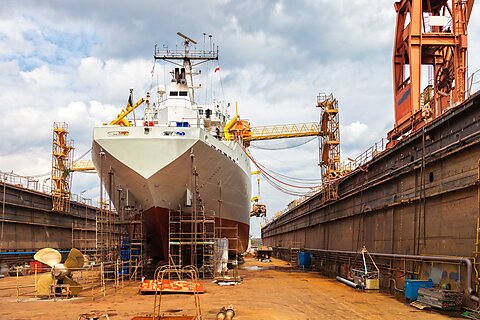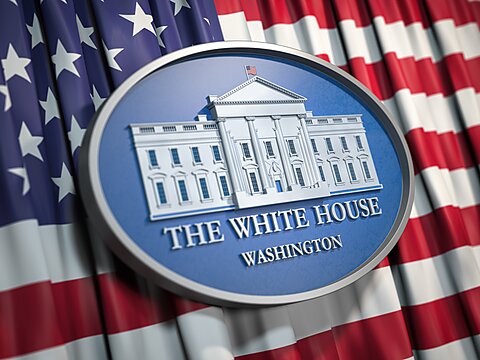Last week the United Steelworkers and other unions filed a Section 301 petition seeking US government action against China over its employment of subsidies and other market‐distorting measures that they blame for the hollowing out of the US commercial shipbuilding industry. Given US‐China animus and election‐year politics, the petition’s timing is auspicious. Indeed, two senators have already announced their support and both President Joe Biden and US Trade Representative Katherine Tai have highlighted the filing on social media.
The complaint, however, is hypocritical, ahistorical, and—most of all—misplaced. While there is no doubt that China engages in market‐distorting practices, they have little explanatory power for the US shipbuilding industry’s enfeebled state.
In the unions’ telling, the United States was one of the world’s leading shipbuilders in the post‐World War II era until the 1981 demise of construction differential subsidies that paid up to half the cost of US‐flagged ships used in foreign trade (ships operating domestically were ineligible). Although the petition later concedes that an “array of factors” explains US commercial shipbuilding’s decades‐long decline, it argues that “headwinds facing the industry since 2000 have been due primarily to unfair competition from China.”
This is an incredibly strained interpretation of history.
As I’ve previously documented, the US shipbuilding record even before the defunding of construction differential subsidies was thoroughly mediocre. From 1951 to 1981, US shipyards’ share of global ship deliveries only exceeded 5 percent twice (1953, 1954) and most years did not exceed 3 percent.
The 18 ships per year delivered on average by US shipyards during this period trailed the shipyards of France (28), Sweden (41), and both the United Kingdom and Germany (80+ each) by significant margins and were dwarfed by those of Japan (270).
While the petition points out that US shipyards in 1975 had “more than 70 commercial ships of 1,000 gross tons or more on order (emphasis added),” their actual deliveries that year did not crack the global top ten. That’s no surprise given their long‐standing lack of competitiveness, with no vessels built for export since 1960. Rather, US commercial shipyards’ orders consisted almost exclusively of subsidized vessels and those required to be built by the Jones Act—not the competitive international market.
Far from a shipbuilding leader, the United States had been relegated to a peripheral role in the global shipbuilding market long before China’s emergence. By the time China—responsible for only 2.5 percent of global shipbuilding output in 1990—started flexing its shipbuilding muscles in the international market, US shipyards had already made their exit. China’s rise has come at the expense of other major shipbuilders, such as those in Japan, South Korea, and the European Union—not the United States.
Claims that Chinese subsidies have had any bearing on the fortunes of US shipyards in recent decades, meanwhile, similarly fail to withstand scrutiny. US‐built oceangoing merchant ships can cost at least 300 percent more than those built overseas. China’s shipbuilding subsidies, however, have been estimated to only reduce their shipyards’ costs by 13–20 percent. Significant to be sure, but an amount that pales in comparison to the vast gulf with US prices.
Remove all Chinese subsidies and US shipyards would very much remain frozen out of the international shipbuilding market.
There’s also the small matter that the US government is itself an avid practitioner of shipbuilding subsidies. Not only does the United States require that vessels used in intra‐US commerce be domestically constructed to comply with the 1920 Jones Act—a significant giveaway to the shipbuilding industry—but it also attempts to promote domestic shipbuilding via federal loans, tax advantages, and direct grants. State and local governments dispense additional goodies. Philly Shipyard, for example, has received over $200 million from the Pennsylvania state government and has a $1 per year lease.
Notably, US shipyards helped torpedo a 1990s agreement to rein in international shipbuilding subsidies. They’ve not just taken advantage of subsidies but have helped perpetuate their worldwide use.
This US affinity for subsidies is also reflected in the petition’s proposed actions. To pressure China over its shipbuilding practices, the petition calls for leveling a new fee on US port visits by Chinese‐built vessels with proceeds going to a “US Commercial Shipbuilding Revitalization Fund.” This fund would be used to beef up existing US subsidy programs and resurrect the construction differential subsidy program—in other words, a de facto tariff to bankroll a playbook that has proved ineffective in revitalizing US shipbuilding.
The money grab is no shock. It is, however, somewhat surprising that the unions turned a blind eye to US‐flag shipping firms’ frequent patronage of Chinese shipyards for repair work. If punishing Chinese shipyards is the goal, such work would seem a logical candidate for higher tariffs. Or, better yet, why not eliminate the tariff for work performed in shipyards outside of China to divert business away from the country?
Although the pursuit of action against China over its market distortions is no doubt politically attractive, it will do nothing to arrest US commercial shipbuilding’s long decline. The industry’s inability to compete internationally isn’t a product of Chinese perfidy in recent decades but a reality that dates back to the 19th century.
The constant in this ongoing saga of US failure is not subsidies by China or any other Asian country but extreme levels of protectionism that have smothered US shipbuilders’ competitive fire. Instead of casting subsidy stones, US policymakers should first inspect their own glass house.




